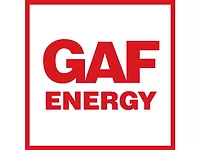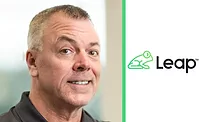Head of the Class
A story about a school should have a lesson in it, but instead of waiting until the end, we’re going to tell you now: Heritage Roofing Systems of Oklahoma, Enid, Okla., recently completed a job for the Enid Public Schools that saved enough money to allow the district to reroof two additional buildings. Now that’s something you don’t read about every day.
A big part of this success story, as you might imagine, is the contractor. Owner and President Rod Heitfeld started Heritage Roofing 20 years ago after getting out of the service. The company began as a small family-owned operation doing general contracting, swimming pools, and some roofing. About 10 years ago, Heritage became a Duro-Last contractor. The company was remodeling a home with a flat roof and decided to try out Duro-Last after seeing an ad (they say it was in Roofer magazine, a former incarnation of Roofing Contractor). Realizing that it was a good system, Heritage followed up this project with a couple of large grocery stores, and then some hospitals, Lone Star Steakhouses and Applebees restaurants.
The success with this product resulted in several good references from happy customers and led Heritage to change its scope to just roofing five years ago. About 90 percent of its work, and to date, over 4 million squares, is with Duro-Last, a PVC-based thermoplastic single-ply roof system with a polyester reinforcement. Heritage only does shingles or standing seam as a peripheral to the Duro-Last membrane. It has done jobs with this system all over the country, as far away Oregon, West Virginia and New Jersey. “We are very happy with the product, warranty and support that we get from the manufacturer,” says Heitfeld. “That’s why this is the only roof we do. We have never owned a tar kettle, and I’m sure we never will.”
Bob Rosewall is responsible for all of the sales and general management of Heritage Roofing. Retired from the Air Force, he agreed to come out of retirement and signed on with Heritage for a month as a management consultant. That was seven years ago. “Rod has high standards and we do high-quality work,” Rosewall explains. “We get 97s, 98s, 99s and even 100s on inspections. In fact, some suspected we had a sweetheart deal with the Oklahoma inspector, but we also get high marks on all of our out-of-state jobs.”
Rosewall says that the company focuses on anchor jobs, a big project to which all resources are devoted, like the Enid Public Schools or a Cinemark 20. “But we have long-term relationships with the owner or the GC, so we can split of a three-man crew to do other work if necessary. It depends on the job.” The company has about 12 men at peak, though it could be as many 20 or as few as seven. “The last slack period we had was in October of 1994. There hasn’t been any slack since.” Rosewall admits that business has slowed a bit in recent months because of the economy, but says that there is still new construction going on. “The solid companies out there are still building and putting on good roofs,” he says. “The work is still out there.”
The Project
The Enid Public Schools project, a contract worth $2.2 million, is the largest single project that Heritage has done. The company installed 700,000 square feet of roofing over a two-year period. “The Enid Schools project is one of the best long-term projects we’ve had,” says Heitfeld. “The working relationship between the school personnel and contractor was fantastic, and I feel that is why the result was win-win.”Work on the project began in October of 1998. Two years prior to the school bid, Heritage had done part of the roof on one of the schools. The administrators were pleased with the performance of the Duro-Last membrane, and when they did the bond issue for the other schools, they wanted to push for Duro-Last. Heritage arranged for a plant tour with the architect and some of the administrators, so that they could ask questions and see how things were done. After the trip, Duro-Last was speced for the entire project.
Obviously, support from the manufacturer paid off for Heritage. “In our approach to the roofing industry, the contractor is the customer. We help them sell and provide them with endless amounts of service,” says Steve Ruth, director of sales for Duro-Last Roofing Inc., Saginaw, Mich. “Our goal is to give them as many sales and marketing tools as they need to help them grow their businesses.” Plant tours for building owners are just one of the tools Duro-Last uses. In the spring and fall, such tours are given up to three times a week, for a total of 50 to 70 a year. “Once building owners get to the plant, they can see the manufacturing process from the raw materials to the finished system,” Ruth continues. “They can see that 85 percent of the seaming is done in the factory, making it easier on the contractor. When building owners see that quality, it puts their minds at ease, and let’s them know that their decision was the right one.” Both the architect and school official that we talked to agreed that the plant tour helped in their decision making process.
Roy Easley of Easley Associates, Architects, Enid, Okla., was the project architect and had worked with the school in the past on bond issues and maintenance items. “We’ve had a 15 to 20 year relationship with the district and had been looking for a roof system to solve recurring problems,” Easley explains. The school had tried BUR and MB, but encountered a lot of flashing and blistering problems. “A lot of times the schools would just put trashcans under the leaks,” Easley says. Another factor was that, “We didn’t want to have to redo the roofs every 10 years, so we started looking and decided on mechanically attached thermoplastic.”
Easley says the district looked at five different roofing systems in addition to already being familiar with several others. Of all of the systems out there then, what made Duro-Last the choice? “The company makes larger segments of material in the factory, so there are fewer problems with installation in the field. They also produce pre-made parapets. We’ve used the system on several projects and liked the performance. Overall, it’s a good process and a sound product. And one thing that’s different about Duro-Last is that everyone there really knows the system.” Of the total of 23 schools in the district, 18 are now done and Easley plans to use Duro-Last on the remaining five.
Ron Garrison, director of property services for the Enid Public Schools, agreed that after comparing different systems, Duro-Last seemed to be the most cost-effective. “Avoiding the inconvenience of a tear-off was important, since school goes year-round here,” he explains. “Also, the system is the most economical for the type of weather we have here – extreme heat and extreme cold. The roofs without Duro-Last have shown cracking, blistering and bubbling.” In addition, the new roofs have resulted in cooler building temperatures. “There have been no problems and the roofs are easy to maintain.”
Teamwork
Heritage reroofed a total of 18 buildings. Little tear-off was needed because the membrane could be put down over existing roofs. “In the original project a tear-off was needed,” explains Rosewall. “By switching to Duro-Last, the owner saved money.” There were some buildings where a tear-off was necessary because of hidden moisture and rotted decks. In these cases, Heritage did a tear-off down to the deck and replaced the deck and insulation (isoboard). On the other roofs, crews used 1/2-inch fanfold insulation as a protective sheet and then put down the membrane.Easley explains that there were some tough flashing conditions from previous installations, for example, flashing against glass blocks. There were also some fascia problems, but the membrane, not to mention the contractor, solved that. “We’ve worked with Heritage all over Oklahoma and as far away as South Dakota. They do good installations,” says Easley. In addition, “There were no problems, which is unusual for the average job.”
There were a few challenges on the job. As with any school project, the presence of a student population makes the emphasis on safety for passers-by, as well as the crew. “You really have to safeguard. In addition to roping off work areas, it was important to keep a dialogue going with each of the school principals,” Rosewall explains. “We took whatever precautions were necessary for each particular area on each particular day.” This might have to do with safety or with noise reduction. “If we were working on a school and the students were doing something like taking achievement tests, we’d work somewhere else so as not to disturb them. It really came down to teamwork with school representatives.”
Heitfeld adds that his company’s professionalism was a big part of the success of the school job. “I think one of the key things we do as a company is to impress upon both the customer and the work crews that we are professionals. I provide shirts, jackets and hats with Heritage and Duro-Last logos, so the crews more or less show up ‘in uniform,’” he explains. “This also made the schools happy, in that during a time of really bad events occurring at schools throughout the nation, our people were easy to identify as belonging at that school at that particular time of day.”
Final Exam: Philosophy 101
And the best part about the whole job? “The district held back 10 percent of the total in case of change orders. We made all of the changes for less than $20,000, so the district had $200,000 left at the end,” explains Rosewall. “This meant that a high school and an elementary school that were not in the original bond could be done.” Now that’s something that could make an owner happy! Indeed, Garrison adds that Heritage, “did a great job and was most accommodating.”It all comes back to Heritage Roofing’s philosophy, “The key point in any successful roofing project is the quality of work you give the customer,” says Heitfeld. “In order to get that, you have to have well-trained, motivated people that want to do a good job.” Rosewall adds, “We do our best work the first time, so there are fewer callbacks. When there is something leaking, it’s usually an AC unit, not a problem with the roof. This is the key to our repeat business,” he says.
And you can’t beat the word-of-mouth advertising that is the result. “We are not afraid to give out our references,” Rosewall continues. “In fact, we did a job in Bay City, Michigan, which was near Duro-Last’s headquarters. People from Duro-Last asked us, ‘How did you get the parapet walls so tight?’ Communication with the manufacturer is very important; we learn from each other. Duro-Last has paid off for the last 10 years.”
Looking for a reprint of this article?
From high-res PDFs to custom plaques, order your copy today!






